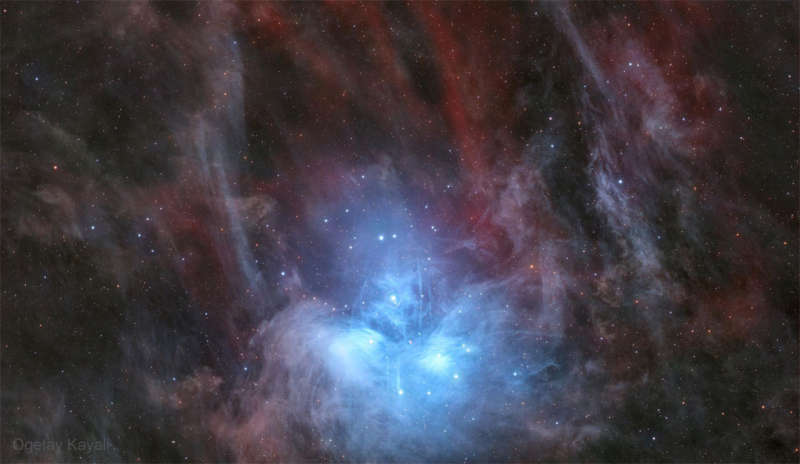
|
Explanation: If you have looked at the sky and seen a group of stars about the size of the full Moon, that's the Pleiades (M45). Perhaps the most famous star cluster in the sky, its brightest stars can be seen even from the light-polluted cities. But your unaided eye can also see its nebulosity -- the gas and dust surrounding it -- under dark skies. However, telescopes can catch even more. The bright blue stars of the Pleiades, also known as the Seven Sisters, light up their surrounding dust, causing it to appear a diffuse blue that can only be seen under long exposures. But that's not all. The cosmic dust appears to stretch upward like ethereal arms. And the entire structure is surrounded by a reddish glow from the most abundant element in the universe: hydrogen. The featured image is composed of nearly 25 hours of exposure and was captured last year from Starfront Observatory, in Texas, USA
Explore Your Universe:
Random APOD Generator
|
January February March April May June July August September October November |
| ||||||||||||||||||||||||||||||||||||||||||||||||
NASA Web Site Statements, Warnings, and Disclaimers
NASA Official: Jay Norris. Specific rights apply.
A service of: LHEA at NASA / GSFC
& Michigan Tech. U.
Based on Astronomy Picture
Of the Day
Publications with keywords: pleiades
Publications with words: pleiades
See also:
- APOD: 2025 August 25 B The Meteor and the Star Cluster
- APOD: 2025 April 8 B Moon Visits Sister Stars
- APOD: 2025 March 5 B Seven Sisters versus California
- APOD: 2025 January 27 B Pleiades over Half Dome
- APOD: 2024 December 9 B Pleiades: The Seven Sisters Star Cluster
- APOD: 2024 September 29 B Seven Dusty Sisters
- APOD: 2024 September 3 B Quarter Moon and Sister Stars
